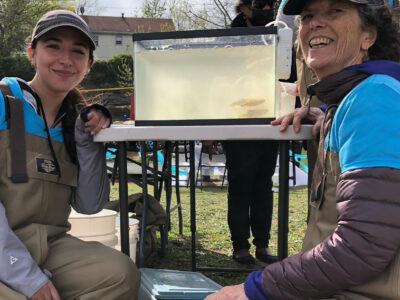
By Katya Vasilaky
Many individuals in the developing world lack access to clean water. But overuse of water by who do have access is equally as threatening, if not more. In the Northern Indian state of Haryana, some estimate that groundwater levels are depleting at about a foot per year, which could end access all together in the not-so-distant future. One contributor to this is the liberal use of water by farmers cultivating rice.
In March, I made a field visit to Haryana along with Ishita Kapur, a Climate and Society Program masters student and research assistant. We met with our partners, the Haryana Irrigation Management Institute, to arrange the details for an upcoming study we are leading on paddy growers’ water use for irrigation in Haryana for the Kharif (Summer) 2015 season. This study arose out previous research on groundwater depletion conducted at the Columbia Water Center under Upmanu Lall and former Earth Institute postdoc Tess Russo, in the neighboring state of Punjab.
Haryana is the 10th largest rice producer in India, producing about 4 thousand tonnes of rice per year. They also receive some of the highest subsidies for electricity use, e.g. from zero cost to low flat rates, which vary by the horsepower of a watering pump. The purpose of this electricity subsidy is to support the irrigation of rice, a state procured commodity. But it also is a contributing factor to the unsustainable levels of water use.
Irrigation costs are quite small in comparison to their profits in this area. For a 15 HP pump, a farmer would pay approximately 525 Rps ($8) per month, where his pump was on and pumping water continuously 8 hours per day during the month of June and into July. For a farmer who owns eight pumps and 25 acres of land for rice alone, a fraction of his expenses go to irrigation ($32), while his profits for rice will be around 850,000 Rps ($13,629) for 25 acres.

While subsidized prices are a contributing factor to water depletion, there are other major factors at play that need to be addressed including poor agricultural technologies and irrigation management, and the lack of collective management of groundwater use. Other studies have looked at price use alone, as well as irrigation management options alone. But understanding the relative contribution of each factor to water overuse is not yet understood.
Our study is a randomized control trial that tests the contribution of all three factors simultaneously. The most difficult factor of these to test is whether group incentives can contribute to the reduction in water use, because it means we must convince groups of farmers to in fact do this: to collectively decide on targets and monitor water use collectively.
Convincing farmers that it’s worth it to reduce their water consumption will rest on our ability to help develop local groups to manage aquifers at the community-level. As it stands, water users associations exist to manage canal water, but not groundwater. And farmers associations meet infrequently and do not manage this issue. In fact, in our focus group meetings during this current visit, we found that farmers often were not aware that their water use affected the availability of water to others. (meeting.jpg)
It’s clear that to curtail the overuse, states like Haryana may need to diversify their cultivation to less water-intensive crops. Indeed, the neighboring state of Punjab has already issued a mandate to reduce the percentage of land used for rice cultivation. But rice will still likely remain a predominant crop in the region, and understanding how water can be used more efficiently, and the incentives that might drive that, is useful not only for the state of Haryana, but for all of us who use water as if it were not a scare resource.
The study is funded by The Earth Institute’s Cross Cutting Initiative. Besides Vasilaky, researchers include Aurelie Harou, Katherine Alfredo, Upmanu Lall and Ishita Singh Kapur.
Katya Vasilaky has a PhD in economics and is a postdoctoral research fellow at The Earth Institute. She has over 10 years of field experience, has designed experimental studies in the field to learn about adoption of new technologies and worked in resource management with the World Bank, Clinton Foundation and the Jameel Poverty Action Lab South Asia.




While I definitely understand the importance of conservation on all levels, are these farmers the biggest source of water depletion there? If I had to choose between a big corporation being punished for over-using water or farmers trying to grow food for India, well…